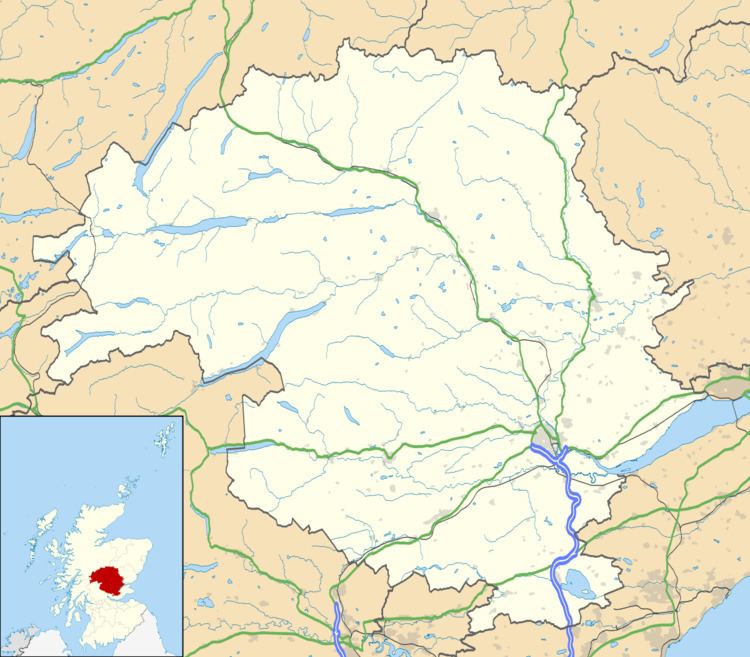Population 21 Post town PERTH Local time Saturday 10:15 PM | OS grid reference NO183203 Sovereign state United Kingdom Postcode district PH2 Dialling code 01738 | |
 | ||
Weather 9°C, Wind S at 8 km/h, 89% Humidity UK parliament constituency Perth and North Perthshire Scottish parliaments North Tayside, North East Scotland | ||
Inchyra (/ɪnˈtʃaɪrə/; Scottish Gaelic: An Innis Iarach "the west isle") is a hamlet in the Carse of Gowrie in Scotland. It lies on the northern bank of the River Tay near Perth and is notable particularly for a number of archaeological finds made in the immediate vicinity. Like other Carse villages it had a large apple orchard, but this was taken away and several varieties of apple bred in Inchyra were lost.
Contents
Map of Inchyra, Perth, UK
Geography
Inchyra lies on the northern bank of the River Tay to the south of the A90. It is approximately 5 kilometres (3.1 mi) east of Perth and 20 kilometres (12 mi) west-south-west of Dundee. It is situated close to St Madoes. It is the only L-shaped village in Scotland. It is surrounded by farmland. The land around it is clay.
Toponomy
In common with a number of villages in the Carse of Gowrie, Inchyra has the Celtic placename element innis meaning "island". Carses such as the Carse of Gowrie are estuarine landforms that have been uplifted by isostatic rebound following the last glacial period. It is likely that Inchyra was an island in the firth of Tay at the time of its settlement.
Inchyra Stone
In 1945 a class I Pictish stone was unearthed during ploughing in a field at Inchyra. The stone is inscribed with a variety of Pictish symbols, including a double disc, mirror and comb, two fish and a serpent as well as an Ogham inscription. It is now on display at Perth Museum.
Roman archaeology
In June 1993, a small hoard of eight Roman Denarii coins were discovered at Inchyra, subsequently being declared as treasure trove and placed in Perth Museum. A Roman brooch with blue enamel inlay has also been found in river silt at Inchyra, again now displayed at Perth Museum.
